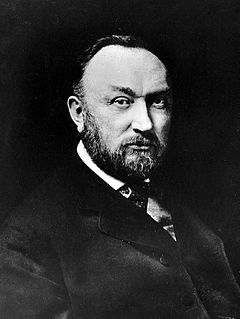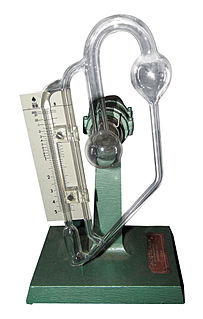Related Research Articles

Edward Charles Pickering ForMemRS HFRSE was an American astronomer and physicist and the older brother of William Henry Pickering. Along with Carl Vogel, Pickering discovered the first spectroscopic binary stars. He wrote Elements of Physical Manipulations.

John Kerr FRS was a Scottish physicist and a pioneer in the field of electro-optics. He is best known for the discovery of what is now called the Kerr effect.

Alfred Fowler, CBE FRS was an English astronomer.
Richard Henry Dalitz, FRS was an Australian physicist known for his work in particle physics.

Percival Spencer Umfreville (Spencer) Pickering was a British chemist and horticulturist.
Sir Jethro Justinian Harris Teall FRS HFRSE PGS was a British geologist and petrographist.

A moonlet, minor moon, minor natural satellite, or minor satellite is a particularly small natural satellite orbiting a planet, dwarf planet, or other minor planet.
Sir Jocelyn Field Thorpe FRS was an English chemist who discovered the Thorpe reaction and the Thorpe-Ingold effect.

Herbert McLeod, FRS was a British chemist, noted for the invention of the McLeod gauge and for the invention of a sunshine recorder.
The Pickering series consists of three lines of singly ionized helium found, usually in absorption, in the spectra of hot stars like Wolf–Rayet stars. The name comes from Edward Charles Pickering and Alfred Fowler. The lines are produced by transitions from a higher energy level of an electron to a level with principal quantum number n = 4. The lines have wavelengths:
Sir Wyndham Rowland Dunstan (1861-1949), was professor of chemistry and Director of the Imperial Institute in London.
References
- ↑ "Fellows of the Royal Society". London: Royal Society. Archived from the original on 16 March 2015.
- ↑ Obituary. (1913) Monthly Notices of the Royal Astronomical Society, volume 73, page 203
- ↑ Hill, A. W. (1941). "Walter Gardiner. 1859-1941". Obituary Notices of Fellows of the Royal Society . 3 (10): 985–1004. doi:10.1098/rsbm.1941.0046.
- ↑ k., C. G. (3 October 1907). "The Rev. Dr. John Kerr, F.R.S" (PDF). Nature . 76 (1979): 575–576. Bibcode:1907Natur..76..575C. doi:10.1038/076575a0.
- ↑ Gray, Robert C. (17 August 1935). "The Rev. John Kerr, F.R.S., Inventor of the Kerr Cell". Nature. 136 (3433): 245–247. Bibcode:1935Natur.136..245G. doi:10.1038/136245a0.
- ↑ O'Connor, John J.; Robertson, Edmund F., "Percy Alexander MacMahon", MacTutor History of Mathematics archive , University of St Andrews .
- ↑ Sidney F. Harmer (1918). "Canon Alfred Merle Norman, F.R.S.". Nature . 102 (2558): 188–189. Bibcode:1918Natur.102..188H. doi:10.1038/102188a0.
- ↑ Holme, I. (2006). "Sir William Henry Perkin: a review of his life, work and legacy". Coloration Technology . 122 (5): 235–251. doi:10.1111/j.1478-4408.2006.00041.x.
- ↑ Russell, E. J. (1921). "Obituary Notice: Percival Spencer Umfreville Pickering". Biochemical Journal. 15 (1): 1–3. doi:10.1042/bj0150001. PMC 1258950 . PMID 16742957.
- ↑ Strahan, A. (1924). "Sir Jethro Teall, F.R.S". Nature. 114 (2855): 95–95. Bibcode:1924Natur.114...95S. doi:10.1038/114095a0. ISSN 0028-0836.
- ↑ "Teall, Jethro Justinian Harris (TL869JJ)". A Cambridge Alumni Database. University of Cambridge.
- ↑ O'Connor, John J.; Robertson, Edmund F., "Walter Frank Raphael Weldon", MacTutor History of Mathematics archive , University of St Andrews .
- ↑ Bourne, Gilbert Charles (1912). . In Lee, Sidney (ed.). Dictionary of National Biography (2nd supplement). 3. London: Smith, Elder & Co. p. 629-631.